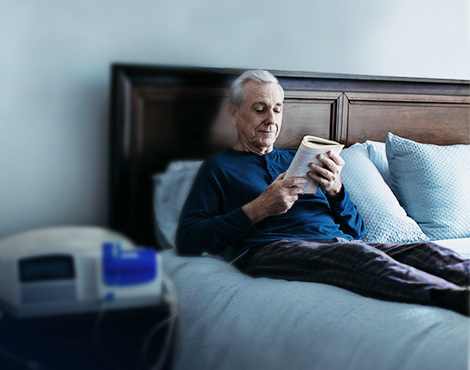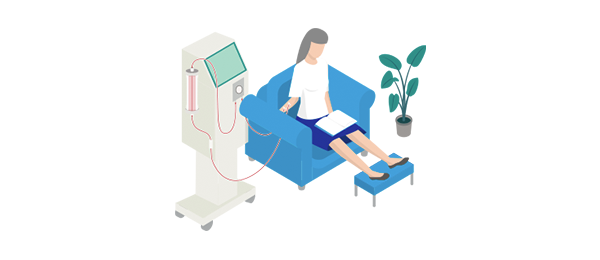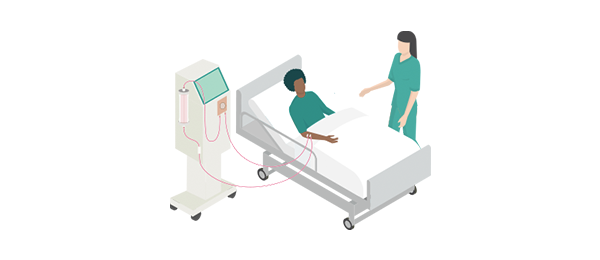Peritoneal Dialysis at Home
Peritoneal dialysis (PD) is a therapy option that uses the lining of your own abdomen to remove waste products from your blood. Here you can learn more about doing peritoneal dialysis (PD) at home.
What is Peritoneal Dialysis (PD)?
If you’re starting dialysis, peritoneal dialysis (PD) might be one of the treatment options available to you. Peritoneal dialysis (PD) is usually done at home and can even be done while you sleep. It is also possible to do peritoneal dialysis (PD) treatments while you travel. So, it might be the right therapy if remaining mobile or having a flexible treatment schedule are important to you.

What is Continuous Ambulatory Peritoneal Dialysis (CAPD)?
CAPD is a type of peritoneal dialysis (PD) that uses gravity, rather than a machine, to “exchange” your old dialysis solution for fresh solution.
CAPD is a possible option for children with kidney disease, but it may depend on how much urine your child still makes. 3 – 4 exchanges each day are recommended, with the ‘fill’ volume measured, for your child’s size. Each exchange usually takes between 30 -40 mins.

What is Automated Peritoneal Dialysis (APD)?
APD is a form of peritoneal dialysis (PD) that uses a machine called a cycler to perform dialysis exchanges. The cycler is programmed to give you the dialysis treatment by your clinician. Typically, an APD programme lasts between 8 and 12 hours, and is performed overnight.
APD is the most commonly used form of PD for children with kidney disease, as it enables the child to attend school each day, and the parent / caregiver to work during the day, without the need for any dialysis interventions during daytime hours.
Remote Patient Management with Automated Peritoneal Dialysis (APD)
You and your clinician may consider using Remote Patient Management to manage your APD treatments. Remote Patient Management allows your clinician to follow your treatment and ensure you are on the right track, which may increase your confidence about doing your treatment at home.

Learning to Perform Peritoneal Dialysis (PD)
The idea of performing peritoneal dialysis (PD) at home may make you feel anxious, but it is actually quite a manageable process. Almost everybody can perform peritoneal dialysis (PD) with proper training. In most cases, this will usually require between 2 and 5 days of training, depending on what type of PD therapy you choose.
For a child needing PD, your renal unit may advocate that 2 caregivers learn how to do the dialysis (this can include the patient, if an adolescent). For APD, training time usually takes 7-10 days.

Benefits of Peritoneal Dialysis (PD)
Peritoneal dialysis (PD) may be the right treatment for you if you work, study or travel regularly and if it suits your lifestyle and medical and physical condition. Doing peritoneal dialysis (PD) at home increases the flexibility and independence of your life on dialysis. It can save you frequent trips to the hospital or clinic and gives you more freedom to do the activities you love.
Where to go next?

Home Haemodialysis (Home HD)
There are other types of dialysis that can be done at home. Learn more about home haemodialysis (Home HD).

In-Centre Haemodialysis (In-Centre HD)
You may prefer to receive dialysis at a hospital or treatment centre near you. Learn more about in-centre haemodialysis (In-Centre HD).

Other Treatment Options
You and your clinician may decide that other treatments such as transplant or conservative care may be a better option for you. Learn more about other treatment options.